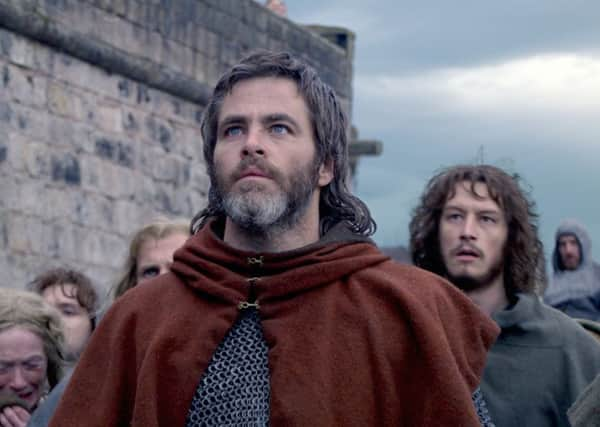Brian Ferguson: Why Outlaw King tourist invasion could change Scotland


There is nothing quite like a ringing endorsement from a Hollywood star. The Isle of Skye certainly seems to have found a big new fan in Chris Pine if the verdict he delivered on the red carpet in Edinburgh is anything to go by. Singling out Talisker Bay from nearly 45 locations deployed for Robert the Bruce epic Outlaw King, his description of its “perfect majesty” could not have been better scripted by the tourism industry. His recollection of its sandy shoreline, towering cliffs and tumbling waterfalls was almost enough to make me head north myself. While Outlaw King has more graphic killings in its running time than an entire slasher film franchise, it is already being seen as potentially the biggest film for Scottish tourism since Braveheart. Unlike Mel Gibson’s Oscar-winning epic, mostly filmed in Ireland, Outlaw King was shot entirely on location across Scotland.
The 65-day shoot has seen it hailed by arts agency Creative Scotland as the country’s biggest-ever home-grown production. Spin-offs from the filming alone are said to have generated £17.5 million for the economy, spread as far afield as Edinburgh, where Craigmillar Castle was transformed into one of the main sets, Glasgow, East Dunbartonshire – the backdrop for its climactic battle sequences – and Glencoe, used for some of its most spectacular scenes. It is little wonder that VisitScotland’s own staff were jostling for red carpet positions with news crews at its Scottish premiere on Friday.
Advertisement
Hide AdIt is hard to imagine how much impact Outlaw King will have on the tourism industry, which is reaping the long-term benefits of the fantasy series Outlander being made in Scotland.
There is little doubt that the film’s launch on Netflix next month is absolutely invaluable, particularly coming in the midst of one of the industry’s traditional off-peak seasons. Its premiere was held just days before the Highlands and Islands was named by Lonely Planet as one of the world’s 10 top places to travel to next year.
On the face of it, the prospect of a new Outlaw King-inspired surge in tourism can only be a good thing for the industry. But that would be to ignore the growing body of evidence that film and television-related tourism is creating significant headaches for the industry.
The Scottish Government has had to find significant sums of money to pay for new infrastructure improvements at several locations on Skye which have frankly been under siege from visitors since the island began to be featured in films like Macbeth, Prometheus and the BFG. Similar action has been ordered in the Glenfinnan area, which has been struggling to cope with growing numbers of Outlander and Harry Potter fans. Edinburgh’s starring role in films and TV shows and its status as the place where JK Rowling found inspiration have also helped to fuel the year-round tourist trade. But they are also partly at the root of growing complaints about the “Disneyfication” of the city and an over-tourism problem that has seen its pavements increasingly over-crowded during peak periods. Edinburgh is not the only part of the country where politicians are warning about radical shifts in the housing market due to growing number of properties being let out and the Airbnb boom.
Tourism may now be the most important industry for many parts of the country, particularly in the face of Brexit-related anxieties. But that does not necessarily mean more tourism should be continually encouraged if it changes fragile landscapes and communities forever.
